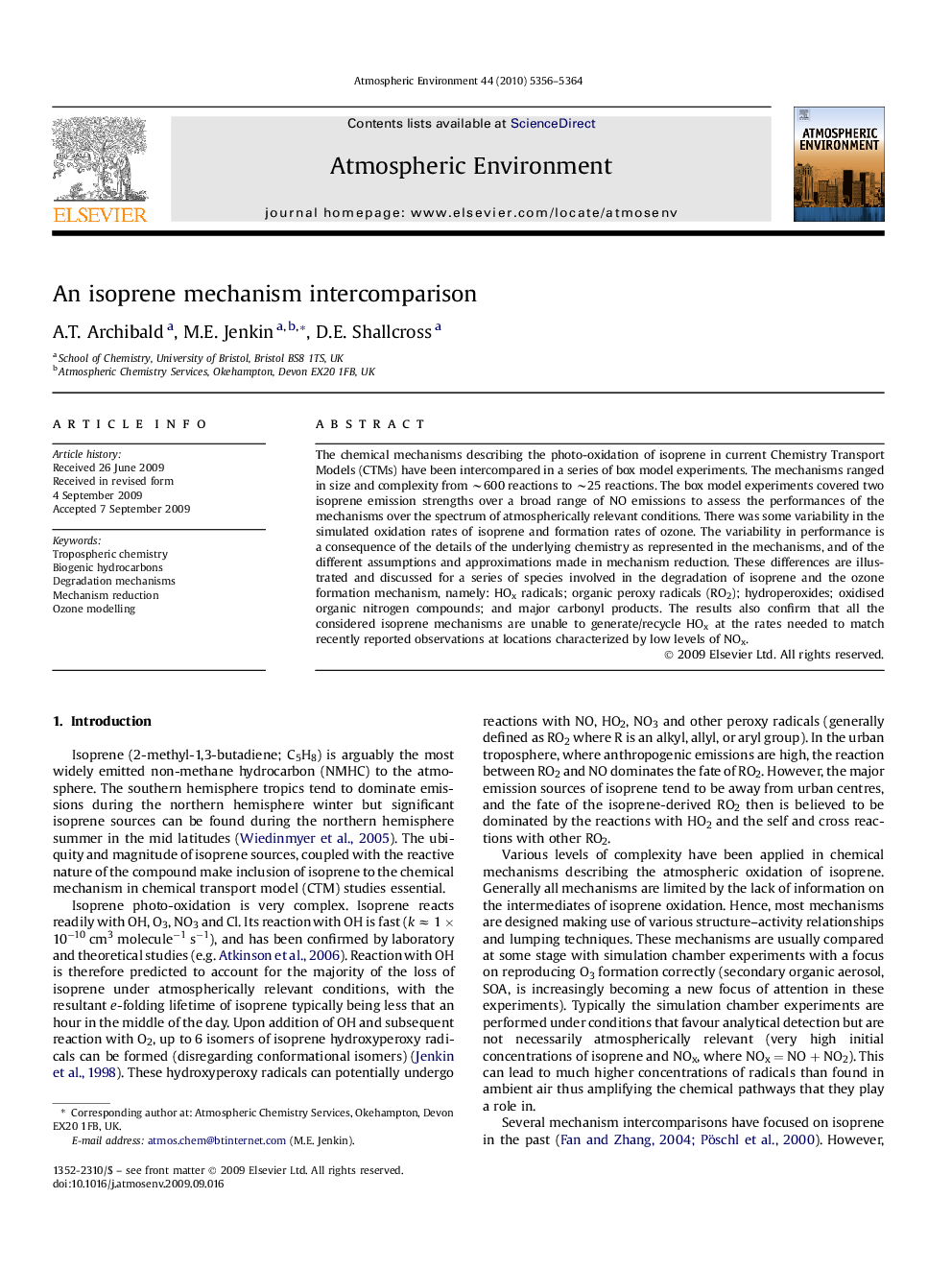| Article ID | Journal | Published Year | Pages | File Type |
|---|---|---|---|---|
| 4440315 | Atmospheric Environment | 2010 | 9 Pages |
The chemical mechanisms describing the photo-oxidation of isoprene in current Chemistry Transport Models (CTMs) have been intercompared in a series of box model experiments. The mechanisms ranged in size and complexity from ∼600 reactions to ∼25 reactions. The box model experiments covered two isoprene emission strengths over a broad range of NO emissions to assess the performances of the mechanisms over the spectrum of atmospherically relevant conditions. There was some variability in the simulated oxidation rates of isoprene and formation rates of ozone. The variability in performance is a consequence of the details of the underlying chemistry as represented in the mechanisms, and of the different assumptions and approximations made in mechanism reduction. These differences are illustrated and discussed for a series of species involved in the degradation of isoprene and the ozone formation mechanism, namely: HOx radicals; organic peroxy radicals (RO2); hydroperoxides; oxidised organic nitrogen compounds; and major carbonyl products. The results also confirm that all the considered isoprene mechanisms are unable to generate/recycle HOx at the rates needed to match recently reported observations at locations characterized by low levels of NOx.
